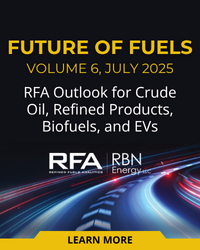Last month, in the U.S. Environmental Protection Agency’s (EPA) latest ruling in a long-running dispute with refiners over the Renewable Fuel Standard (RFS), EPA denied 36 petitions from refiners seeking exemptions to their obligation to blend renewables like ethanol into gasoline for the 2018 compliance year. At the core of this dispute are two contradictory premises about Renewable Identification Numbers, or RINs. One premise says the RINs system adds cost that hurts refiners’ profitability, while the other says refiners’ profitability is not affected. Can two seemingly contradictory premises be true? In today’s RBN blog, we begin an examination of the issues surrounding RINs and the degree to which the cost affects refiners’ and blenders’ bottom lines.
RINs were among the first topics that RBN tackled in the blogosphere. As we said way back in 2012 in The RIN and Stimpy Show, RINs are used to monitor compliance with the federal RFS, which was created by the Energy Policy Act of 2005 and expanded and extended by the Energy Independence and Security Act of 2007. Figure 1 helps explain how RINs work. The big gray boxes represent the key players in all this, including (from the left) the renewable fuel (ethanol) producer; the refinery producing oil-based blendstock for oxygenated blending (BOB, or “unfinished” gasoline) or the importer importing BOB; the blender that mixes BOB with ethanol; and the service station where the blended gasoline (E10 in this example, a 90-10 mix of BOB and ethanol) is sold. When a gallon of ethanol (light green box to upper left) is produced for blending into BOB, a RIN — a 38-digit number — is assigned and “attached” like a virtual mattress tag to that gallon of ethanol (dark green oval to upper left).
Join Backstage Pass to Read Full Article








